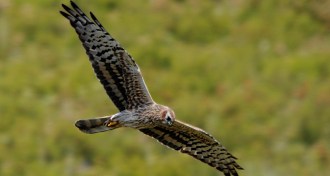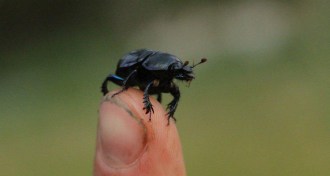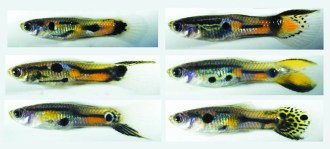Life
Sign up for our newsletter
We summarize the week's scientific breakthroughs every Thursday.
-
 Animals
AnimalsMigration is a deadly time for raptors
For a bird or any other animal that migrates a long distance, it’s sure to face a host of dangers. The story is no different for raptors.
-
 Life
LifeThank insects and microbes that we aren’t over our knees in feces
Ever wondered why you’re not drowning in poop? Scientists harnessed the power of citizen science to find the beetles and microbes we can thank for that.
-
 Humans
HumansHumans’ music and genes may have evolved together
Music may be a tool scientists can use to trace human migrations.
-
 Neuroscience
NeuroscienceThe Inconstant Gardener
Microglia, the same immune cells that help sculpt the developing brain, may do damage later in life .
By Susan Gaidos -
 Health & Medicine
Health & MedicineNicotine withdrawal linked to specific brain cells in mice
A group of cells within one brain region may control the physical symptoms that plague people trying to kick their cigarette addiction.
-
 Neuroscience
NeuroscienceBrain reconstruction hints at dinosaur communication
T. rex and other dinos might have understood complex vocal calls.
-
 Genetics
GeneticsDogs’ origins lie in Europe
First domesticated canines did not live in China or Middle East, a study of mitochondrial DNA finds.
-
 Neuroscience
NeuroscienceTeenagers act impulsively when facing danger
Brain activity may help explain why crime peaks during the teenage years.
-
 Animals
AnimalsTibet may be ancient home of big cats
A recently discovered fossil skull and teeth suggest that the ancestor of all big cats lived in what's now Tibet.
-
 Neuroscience
NeuroscienceAnother look at paralysis
Robotic suits help paralyzed people move, but simple behavior changes may prevent the accidents that cause the injuries.
-
 Life
LifeHow to kill the last microbes standing
Chemical wipes out bacteria that linger after antibiotic treatment.
By Beth Mole -
 Animals
AnimalsThe hottest guy guppies stand out in a crowd
A new study shows that sexy male guppies are the ones who stand out the most, the rarest in the crowd. But what is the rare male effect for?